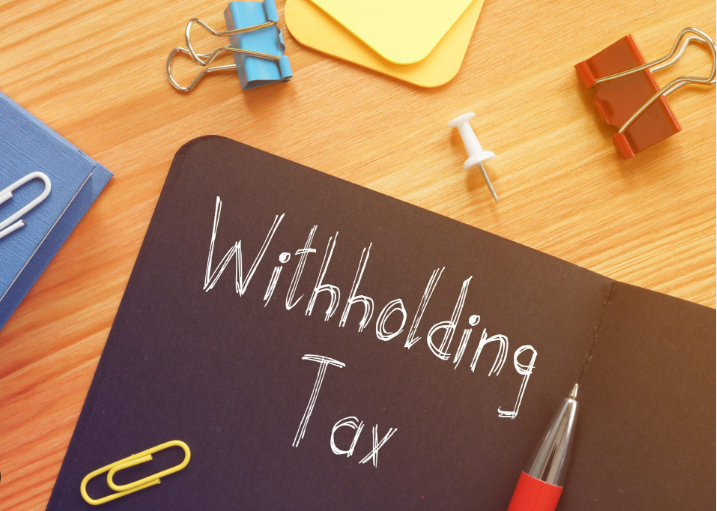
Understanding tax obligations is crucial to avoid costly mistakes. Backup withholding is a mechanism where a payer withholds a portion of the payment to another party to safeguard the IRS’s interests. This typically happens when the recipient provides erroneous or flagged tax information, notably their Taxpayer Identification Number (TIN).
Knowing when backup withholding is mandatory, which income types it applies to, and when it can be ceased is essential. Let’s delve into these details.
How to Know if You Should Begin Backup Withholding
Essentially, backup withholding kicks in whenever there’s an issue with tax information, whether it’s provided to you or by you.
For instance, let’s consider a scenario where you’re an employer or a small business owner. You agree to compensate a freelancer with at least $600 for their services, like creating website content or designing marketing materials. However, upon receiving their W9 form, you notice their Taxpayer Identification Number (TIN) is either incorrect or bounces.
This discrepancy means the IRS lacks records for this individual, whom they expect to collect taxes from. Consequently, you’re responsible for covering the shortfall. Backup withholding should commence on subsequent payments once the issue is identified. While there are other instances mandating backup withholding, this example illustrates a straightforward case.
Conversely, if you’re the freelancer, and you inadvertently provided incorrect tax information, the paying entity will initiate withholding a portion of your payments. Consequently, your earnings may appear diminished until the matter is resolved.
Although freelancers typically manage their tax affairs independently, employers may need to withhold payments in such cases until TIN issues are resolved. If you’re a small business required to file a 1099-MISC form due to payments exceeding $600 in the preceding tax year, backup withholding becomes necessary if the TIN or Social Security Number (SSN) on the W9 provided by the freelancer is problematic.
Backup Withholding “C” Program
Backup withholding, known as “C” backup withholding, might also apply to individual taxpayers. It activates if there’s underreported or misreported interest or dividend income on your federal tax return. If you encounter this issue, you’ll be required to initiate backup withholding.
Fortunately, you’ll have ample opportunity to rectify it. Upon such occurrence, you’d receive up to four notices within a 120-day timeframe, prompting you to address the discrepancies. Backup withholding should only commence after this 120-day period if the issue remains uncorrected, whether due to inability or unwillingness to address it promptly.
What You Need to Withhold
Presently, the backup withholding rate stands at 24%. This signifies that you’re required to retain 24% of the disputed sum or transaction. It’s essential to note that this figure may vary depending on the tax code in effect. If you find yourself in a situation necessitating backup withholding, ensure to confirm the precise amount to withhold by consulting with the IRS.
When You Can Cease Backup Withholding

You can discontinue backup withholding (whether as a payee or a payer) once the issue prompting the backup withholding is resolved. To ensure you receive credit for withheld income, report it on your 1099 or W2-G form for the year in which you received the income.
If you’re subjected to backup withholding, it’s crucial to promptly address the issue. Not only do you want to reclaim all your earnings, but it also imposes an additional burden on resources for small businesses attempting to rectify the situation. Businesses might be less inclined to engage with individuals who provided incorrect information—especially if they fail to take any steps to rectify it. If you find yourself subject to backup withholding, prioritizing resolution should be a top concern.
Kinds of Income Subject to Backup Withholding
Below is a brief list of income types that could be subject to backup withholding if there’s an issue:
- Interest payments.
- Dividend income.
- Rental or lease payments.
- Royalties.
- Gambling winnings.
Kinds of Income Not Subject to Backup Withholding
Conversely, there are instances where you won’t need to initiate backup withholding for the funds you send or receive. Here are some examples:
- Long-term care benefits.
- Foreclosure proceedings.
- Cancelled debts.
- Retirement income.
- Real estate transactions.
In Conclusion
It’s often said that two things in life are certain: death and taxes. When it comes to taxes, the IRS is vigilant about ensuring they receive their share. Backup withholding comes into play when there’s confusion or errors in paperwork, serving as a precautionary measure for the IRS. To avoid being subjected to backup withholding, it’s crucial to maintain meticulous paperwork, especially when freelancing or dealing with freelancers. Keeping documents organized, accurate, and error-free reduces the likelihood of facing the hefty 24% backup withholding.
